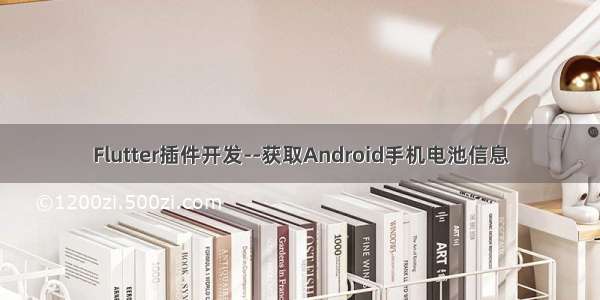
1. 安装插件
配置 device_info 插件。
dependencies:flutter:sdk: flutter# 设备信息device_info: ^2.0.2
在pubspec.yaml中配置保存后,在开发工具环境中会自动下载依赖包。
如果无法正常下载,执行 flutter pub get 。
2. 引入依赖
在需要用到的该插件的文件中引入插件包。
// 引入插件import 'package:device_info/device_info.dart';
3. 使用插件
苹果设备:
DeviceInfoPlugin deviceInfo = DeviceInfoPlugin();IosDeviceInfo iosInfo = await deviceInfo.iosInfo;print('设备唯一标识:${iosInfo.identifierForVendor}'); // 更多信息请查看 AndroidDeviceInfo 类中的定义
安卓设备:
DeviceInfoPlugin deviceInfo = DeviceInfoPlugin();AndroidDeviceInfo androidInfo = await deviceInfo.androidInfo;print('设备唯一标识: ${androidInfo.androidId}');// 更多信息请查看 IosDeviceInfo 类中的定义
4. 完整示例
import 'package:flutter/material.dart';// 引入插件import 'package:device_info/device_info.dart';class DevicePage extends StatefulWidget {DevicePage({Key key}) : super(key: key);@override_DevicePageState createState() => _DevicePageState();}class _DevicePageState extends State<DevicePage> {@overridevoid initState() {super.initState();// 获取设备信息this._getDeviceInfo();}void _getDeviceInfo() async{DeviceInfoPlugin deviceInfo = DeviceInfoPlugin();// 安卓系统// AndroidDeviceInfo androidInfo = await deviceInfo.androidInfo;// print('设备唯一标识: ${androidInfo.androidId}');// 更多信息请查看 AndroidDeviceInfo 类中的定义// 苹果系统IosDeviceInfo iosInfo = await deviceInfo.iosInfo;print('设备唯一标识:${iosInfo.identifierForVendor}'); // 更多信息请查看 IosDeviceInfo 类中的定义}@overrideWidget build(BuildContext context) {return Container(child: Scaffold(appBar: AppBar(title: Text("设备信息"),),));}}
参考:https://pub.flutter-/packages/device_info
Flutter 获取设备信息
获取当前设备平台
获取屏幕宽高
获取状态栏高度
获取当前设备平台
第一种,直接通过Platform类来判断,不需要任何参数,很方便
Platform.isAndroid;
Platform.isFuchsia;
Platform.isIOS;
Platform.isLinux;
Platform.isMacOS;
第二种,通过ThemeData拿到TargetPlatform,然后在判断也可以
final ThemeData theme = Theme.of(context);
TargetPlatform targetPlatform = theme.platform;
switch(targetPlatform){
case TargetPlatform.android:
break;
case TargetPlatform.fuchsia:
// TODO: Handle this case.
break;
case TargetPlatform.iOS:
// TODO: Handle this case.
break;
}
获取屏幕宽高
///屏幕size
static Size screenSize(BuildContext context) {
return MediaQuery.of(context).size;
}
/// 屏幕宽度
static double screenWidth(BuildContext context) {
return MediaQuery.of(context).size.width;
}
/// 屏幕高度
static double screenHeight(BuildContext context) {
return MediaQuery.of(context).size.height;
}
获取状态栏高度
MediaQuery.of(context).padding.top
————————————————
版权声明:本文为CSDN博主「AnyEnter」的原创文章,遵循CC 4.0 BY-SA版权协议,转载请附上原文出处链接及本声明。
原文链接:/zhuqian886/article/details/109111999
2、获取信息
android版本所有属性
/// Android operating system version values derived from `android.os.Build.VERSION`.final AndroidBuildVersion version;/// The name of the underlying board, like "goldfish".final String board;/// The system bootloader version number.final String bootloader;/// The consumer-visible brand with which the product/hardware will be associated, if any.final String brand;/// The name of the industrial design.final String device;/// A build ID string meant for displaying to the user.final String display;/// A string that uniquely identifies this build.final String fingerprint;/// The name of the hardware (from the kernel command line or /proc).final String hardware;/// Hostname.final String host;/// Either a changelist number, or a label like "M4-rc20".final String id;/// The manufacturer of the product/hardware.final String manufacturer;/// The end-user-visible name for the end product.final String model;/// The name of the overall product.final String product;/// An ordered list of 32 bit ABIs supported by this device.final List<String> supported32BitAbis;/// An ordered list of 64 bit ABIs supported by this device.final List<String> supported64BitAbis;/// An ordered list of ABIs supported by this device.final List<String> supportedAbis;/// Comma-separated tags describing the build, like "unsigned,debug".final String tags;/// The type of build, like "user" or "eng".final String type;/// `false` if the application is running in an emulator, `true` otherwise.final bool isPhysicalDevice;
ios版本所有属性:
/// Device name.final String name;/// The name of the current operating system.final String systemName;/// The current operating system version.final String systemVersion;/// Device model.final String model;/// Localized name of the device model.final String localizedModel;/// Unique UUID value identifying the current device.final String identifierForVendor;/// `false` if the application is running in a simulator, `true` otherwise.final bool isPhysicalDevice;/// Operating system information derived from `sys/utsname.h`.final IosUtsname utsname;
好吧,只要一行依赖就可以集成两个平台的项目代码,毫无繁琐配置,flutter真的简单。














